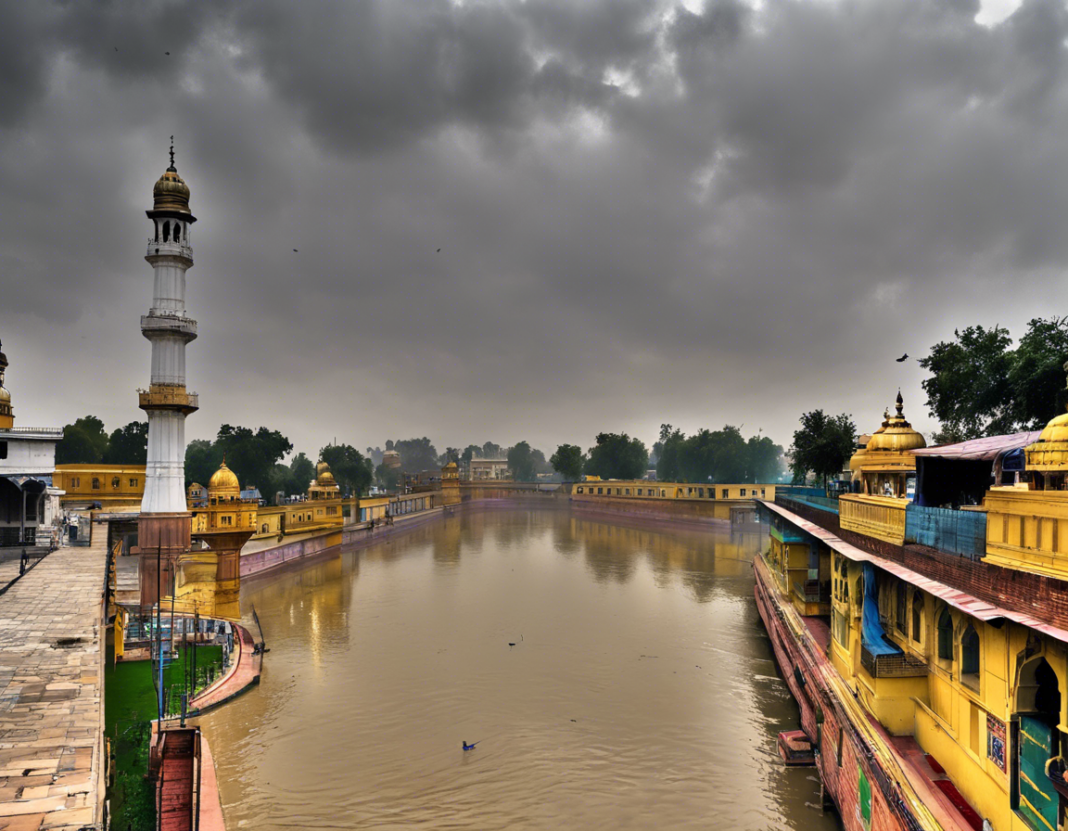Amritsar, a vibrant city located in the northern state of Punjab, India, is known for its rich history, culture, and of course, its unique weather patterns. The weather in Amritsar is characterized by extreme temperatures, with scorching summers and chilly winters, making it imperative for visitors to plan their trip accordingly. In this comprehensive guide, we will delve into the weather patterns in Amritsar, what to expect during each season, and how to make the most of your visit no matter when you choose to go.
Understanding the Climate in Amritsar
Geographical Influences
Amritsar experiences a semi-arid climate, largely influenced by its geographical location. Situated in the northwestern part of India, close to the border with Pakistan, the city is exposed to dry winds blowing in from the nearby deserts. These winds contribute to the aridity of the region, especially during the summer months.
Seasonal Variation
Amritsar experiences four distinct seasons – summer, monsoon, post-monsoon (autumn), and winter. Each season brings its own unique set of weather conditions, offering visitors a diverse experience throughout the year.
Summer (March to June)
Temperature
The summer months in Amritsar, spanning from March to June, are characterized by extreme heat. Temperatures can soar to as high as 45°C (113°F) during the peak of summer, making it essential for visitors to stay hydrated and seek shade when exploring the city.
Clothing
Light, breathable clothing is a must during the summer months, along with ample sunscreen to protect against the harsh sun. It is advisable to plan outdoor activities early in the morning or later in the evening to avoid the hottest part of the day.
Monsoon (July to September)
Rainfall
The monsoon season in Amritsar typically begins in July and lasts through September. During this time, the city receives moderate to heavy rainfall, providing relief from the scorching heat of summer. The rain showers add a refreshing touch to the cityscape, making it a pleasant time to explore Amritsar’s attractions.
Packed Essentials
Visitors should pack an umbrella or raincoat to navigate the occasional downpours. The rain also enhances the greenery in and around the city, creating a picturesque setting for travelers to enjoy.
Post-Monsoon (October to November)
Weather Transition
The post-monsoon season in Amritsar marks a transition from the rainy monsoon months to the onset of winter. The weather during this period is mild and pleasant, with cooler evenings signaling the forthcoming winter season.
Festive Vibes
This time of the year is particularly festive in Amritsar, with the celebration of Diwali adding a vibrant and colorful charm to the city. Visitors can partake in the festive spirit and witness the beautiful decorations and lights adorning the streets.
Winter (December to February)
Chilly Temperatures
Winter in Amritsar brings chilly temperatures, with the mercury dropping to as low as 0°C (32°F) on particularly cold days. The city experiences foggy mornings and evenings, adding a mystical allure to its historic landmarks.
Winter Wardrobe
Travelers should pack warm clothing, including jackets, sweaters, and scarves, to stay comfortable during their winter explorations. Visiting the Golden Temple and other outdoor attractions during the day is ideal, while cozying up by a bonfire or savoring hot beverages in the evenings is a delightful way to experience Amritsar in winter.
Frequently Asked Questions (FAQs)
1. What is the best time to visit Amritsar?
The best time to visit Amritsar is during the post-monsoon season from October to November and the winter months from December to February when the weather is pleasant and ideal for sightseeing.
2. How hot does it get in Amritsar during the summer?
Summer temperatures in Amritsar can reach up to 45°C (113°F), making it extremely hot and humid. It is advisable to plan outdoor activities during the cooler parts of the day.
3. Does it rain a lot in Amritsar during the monsoon season?
Amritsar receives moderate to heavy rainfall during the monsoon season, which occurs from July to September. The rain showers provide relief from the summer heat and add a refreshing touch to the cityscape.
4. What should I pack for my trip to Amritsar in winter?
Travelers visiting Amritsar during winter should pack warm clothing, including jackets, sweaters, scarves, and thermals to combat the chilly temperatures. It is also advisable to carry moisturizer to prevent dry skin due to the cold weather.
5. Are there any cultural festivals I should experience in Amritsar?
Diwali, the festival of lights, is a major cultural festival celebrated with great fervor in Amritsar. Visitors can witness the city adorned with colorful lights and decorations during this festive period, adding an extra dose of joy to their trip.
In conclusion, Amritsar’s weather offers a blend of extreme temperatures and seasonal variations, each contributing to the city’s unique charm. By understanding the weather patterns and planning your visit accordingly, you can make the most of your time in this culturally rich destination, no matter the season.
